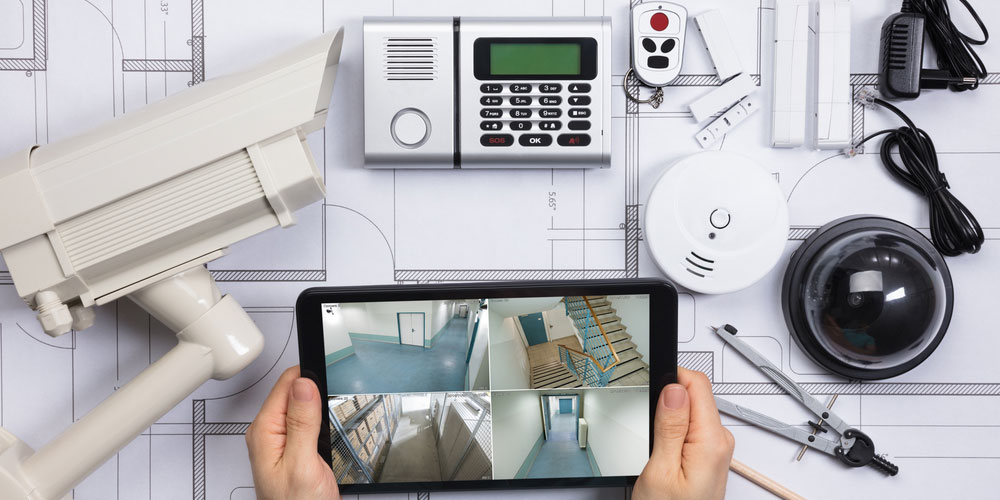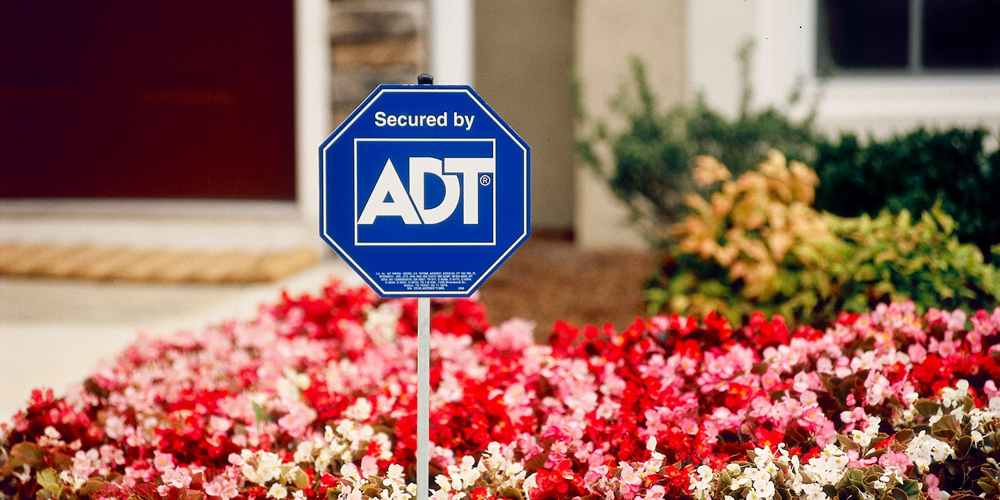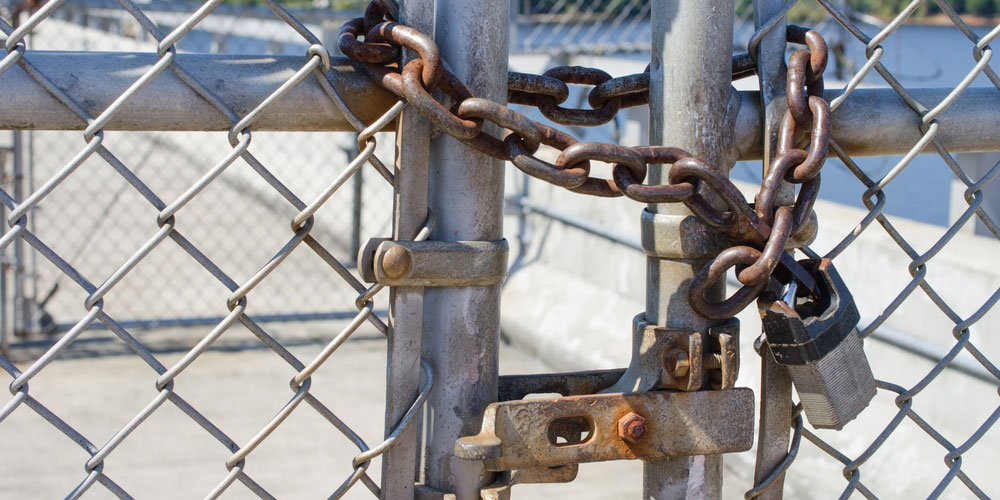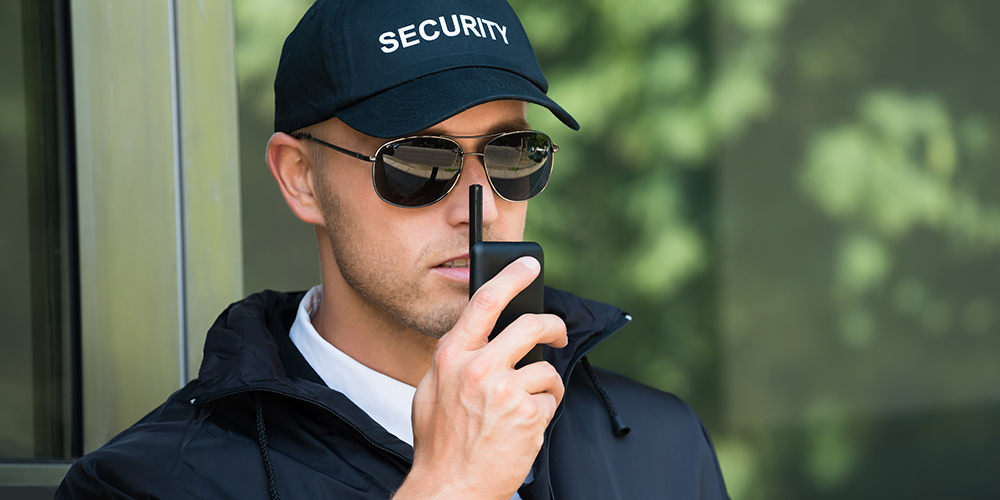Lock Blog
A resource for consumers, locksmiths, and security professionals
A resource for consumers, locksmiths, and security professionals

Physical security is a very broad topic, but we are going to attempt to not only define physical security but get to the core of that meaning in a practical sense. You will not only learn the definition of physical security but also how to apply the concepts to your needs.
The basic physical security concepts we will cover in article are:
Physical security measures are a mixture of products and processes, which reduce the chance of theft, damage, and harm to property and people. If you can touch it, you can protect it with physical security. This is a blanket term used to describe all the ways to protect tangible items.
Physical security protects individuals and property from harm and theft. These are the means by which you retain ownership and control over tangible goods and real estate. Without physical security, even the safety of your person is put at risk. It is at the root of basic human needs.
The base elements of physical security are prevention, fortification, and response. Your security should prevent a criminal incident from ever occurring, fortify against any attempt made, and create a plan for responding to successful or unsuccessful crimes.
To get the right amount of physical security for your needs, you need to calculate the ROI of your security. The basic formula is to budget out at least 10% of the cost to replace what you are protecting and spend specifically to curb the most pressing threats identified in your building assessment.
Instead of waiting to evaluate your office security after a break-in, you can preemptively hire a company that performs penetration (pen) tests. These are controlled attacks on your physical security that provide data on the effectiveness of your current level of protection.
Penetration tests are ideal for large corporate offices and buildings that house servers, heavy machinery, or other expensive equipment. A large workforce and a stockpile of high-value property make the investment in a pen test worthwhile to manage your vulnerability levels.
You can upgrade some of your physical security with additional products and equipment. It is possible to improve your front door security by using 3-inch set screws for strike plates/hinges. And transparent security film can increase the strength of your window glass.
What is physical security really? It is the interconnected use of various elements such as warning signs, locks, doors, barriers, surveillance, etc. The elements of physical security are best categorized by the provision of prevention, fortification, and response.

The first step in physical security is preventing a crime from being attempted. This is done with indicators that the property is being monitored, protected, or otherwise secured. These physical security elements take the form of warning signs, security company logos, and property visibility.
The issue with preventative physical security is that it is undermined simply by the decision to ignore it. Though these security measures suggest an intention to protect, a criminal may wish to test or challenge your security further.
As soon as a challenge is made, this element of physical security provides no meaningful protection. If a criminal decides to take the risk of being foiled or caught, it will be because they do not believe your security is enough or the value of your property outweighs the risk.
Preventative physical security includes:
Signage – Prominently displayed documents stating the presence or use of security products or planned response. Ex: neighborhood watch, beware of dog, alarm company logo, surveillance warning, or suggestion of armed response.
Lighting – Exterior lights increase perimeter visibility so bystanders can intervene if a crime is witnessed. Interior lights suggest someone is present to respond to any suspicious or illegal behavior.

If a crime is attempted, your security needs to withstand the attack and prevent unauthorized access. This fortification comes from physical security measures designed to maintain a desired boundary. For this security to be overcome, it must be physically undermined.
Even when you are using various forms of physical access control, doors can be kicked in, locks can be picked, and walls can be climbed. The quality of your fortifications has to do with how simple it is to defeat your physical security by kicking, picking, climbing, etc.
This is quite literally the make or break point of your physical security. The strength of your fortifications gives you more time to respond to a threat. Strong enough security can even discourage criminals from spending the time needed to defeat your protections.
Fortified physical security includes:
Locks – Any entryway leading to something you want to secure needs a keyed lock. You can use high-security door locks or secure a gate with a quality padlock. The strength of a lock is determined by drilling, picking, and cutting resistance.
Doors – The strength of your door is predominantly based on the type and amount of material used. The difference between solid core and hollow core doors being the lighter and less substantial hollow door breaks more easily when kicked or struck.
Barriers – The various perimeter security methods prevent persons or vehicles from approaching a structure. Barriers can be scaled or circumvented but are rarely broken to gain access to property. Ex: Gates, walls, fences, and bollards.

Even the best fortifications cannot withstand extreme or prolonged attacks. That is why there must be a response when your physical security is tested. Your response time needs to fall within the window of time it takes to overwhelm your security, commit a crime, and leave.
The longer your fortified physical security holds up, the longer of a window you have to respond. You will need to blend your passive and active security in order to maximize your response window. Do not rely on the threat of response as a deterrent for crime.
This physical security element is based on how the respondent is able to successfully thwart a crime once it is in progress. You will likely need security measures and devices to alert yourself or others when there is an attack underway.
Responsive physical security includes:
Cameras – Many modern security cameras will send alerts when something triggers their motion sensor. You can assess the threat before responding. Just be sure you know the best places to install cameras so your device is able to detect the threat.
Alarms – For alarms to be effective, they must be monitored. That means having an alert or call-out feature that reaches you, a private company, or law enforcement. You do not want an alarm that relies on someone hearing it to intervene.
Guards – You do not need to be the one who responds to an active threat. This can be outsourced to the police, private security companies, or neighborhood watch. Though response times are unreliable, it is a good safety net if you cannot respond yourself.
You must perform some form of risk assessment to better determine the level of physical security that is right for you. This means determining the threats you are most likely to experience and assessing your vulnerability to said threats.
For example, in a retail setting, the threat of employee theft is going to be higher than in a corporate environment where there is less loose cash and product. And though two homes may have the same threat level of burglary, one may have less vulnerability because their landlord insists on using high-security locks and motion sensor lights.
Sometimes your physical security can make you a target for criminals. If you are using locks with a documented bypass or a security system the criminal has experience with, your property can be singled out as an easy target. In this case, the threat level and vulnerability are higher.
Signs about armed response may also send the message that there are guns in the house, which may be sought after by a particular criminal element. This does not affect your vulnerability, but it does increase your threat level.
Key Takeaways:
We define physical security as the means used to protect yourself and your property. That requires taking steps to deter, ward off, and catch criminals who are threatening your safety. To find the best physical security for your needs, contact a security professional.
You can see if United Locksmith services your local area and start the process of improving your physical security. And if you have any questions or thoughts on the topic of “what is physical security,” leave a comment below.
Category: Commercial, Residential, Safety & Security